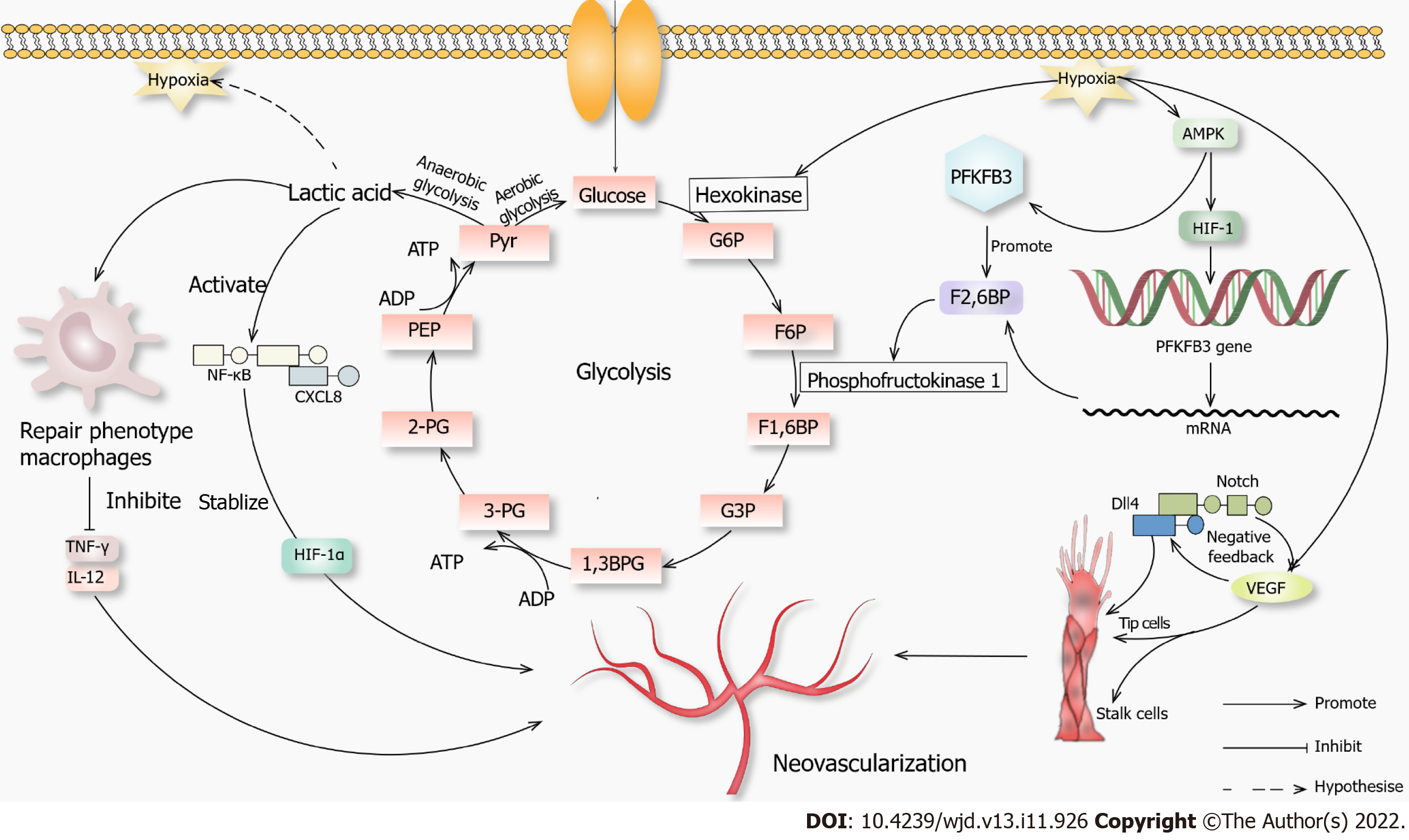Copyright
©The Author(s) 2022.
World J Diabetes. Nov 15, 2022; 13(11): 926-939
Published online Nov 15, 2022. doi: 10.4239/wjd.v13.i11.926
Published online Nov 15, 2022. doi: 10.4239/wjd.v13.i11.926
Figure 1 Novel mechanisms of neovascularization.
When glucose enters the cell through channels that initiate glycolysis in an aerobic environment, when the anaerobic glycolysis, lactic acid can cause macrophages to convert to a repair phenotype. These macrophages will not produce inflammatory factors such as tumor necrosis factor γ and interleukin 12, which promotes angiogenesis. Lactic acid can activate the nuclear factor kappa-B-C-X-C motif chemokine 8 pathway, promote vascular endothelial growth factor (VEGF) secretion, stabilize hypoxia-inducible factor-1α (HIF-1α), and promote angiogenesis. When hypoxia occurs in the environment, it promotes hexokinase, which promotes glycolysis, and AMPK, which promotes hypoxia-inducible factor-1. It then acts on 6-phosphofructo-2-kinase/fructose-2,6-biphosphatase 3. AMPK also acts directly on 6-phosphofructo-2-kinase/fructose-2,6-biphosphatase 3, and they jointly promote fructose-2,6-biphosphatase, which acts on phosphofructokinase 1 and promotes glycolysis. Hypoxia also promotes VEGF secretion, and a high concentration of VEGF activates the Notch-DLL4 pathway, directly or indirectly promoting the proliferation of tip cells. VEGF also promotes the growth of stalk cells, and both promote angiogenesis. 1,3BPG: 1,3 diphosphoglycerate; 2-PG: 2-phosphoglycerate; 3-PG: 3-phosphoglycerate; F1,6BP: Fructose 1,6-diphosphate; F2,6BP: Fructose 2,6-diphosphate; F6P: Fructose 6 phosphate; G3P: Glyceraldehyde-3-phosphate; G6P: Glucose 6-phosphate; PEP: Phosphoenolpyruvate; Pyr: Pyruvic acid.
- Citation: Cai Y, Zang GY, Huang Y, Sun Z, Zhang LL, Qian YJ, Yuan W, Wang ZQ. Advances in neovascularization after diabetic ischemia. World J Diabetes 2022; 13(11): 926-939
- URL: https://www.wjgnet.com/1948-9358/full/v13/i11/926.htm
- DOI: https://dx.doi.org/10.4239/wjd.v13.i11.926









